We all know Rudolph the Red-Nosed Reindeer, but what most of us don´t know so well, is how the authentic reindeer herding operates. Reindeer herding is one of the traditional and still very important livelihoods of the indigenous Sámi population, inhabiting the northern parts of Finland, Sweden and Norway and Kola Peninsula, Russia. By reading this article, you gain understanding about the most intense time of the year of reindeer herders, the reindeer roundup.
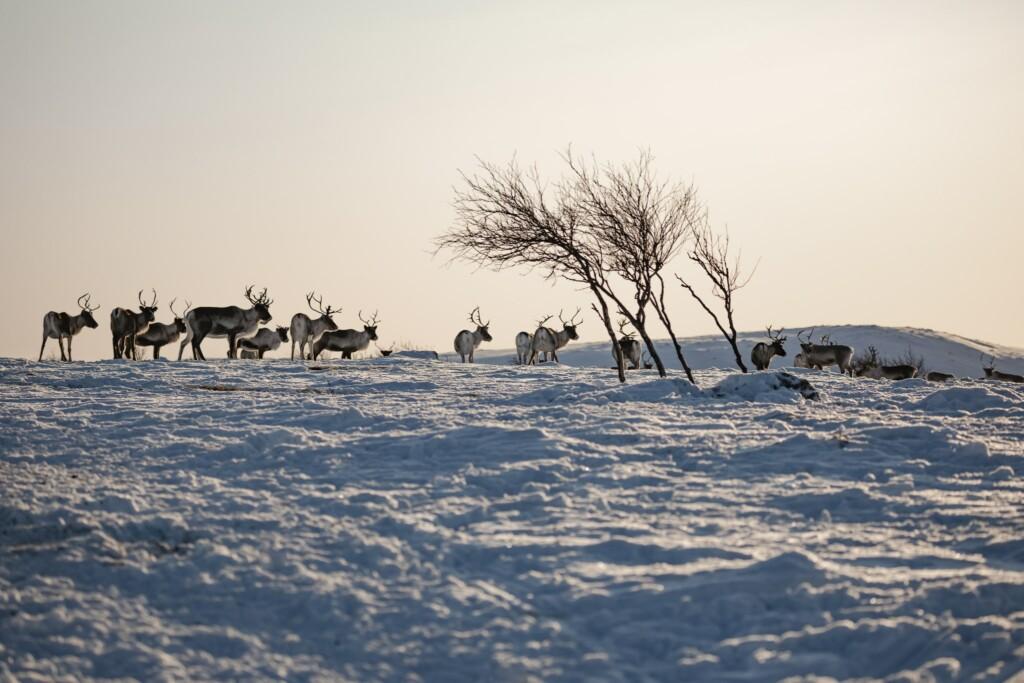
Reindeer Herding is Cooperation
Reindeer are wild animals that are privately owned by reindeer herders. In Finland, reindeer herding is practiced under 54 different co-operatives called “paliskunta”, which are also vast geographical regions where the reindeer of that specific co-operative graze and where the reindeer herders work. Reindeer herding in practise has evolved around the natural behaviour of the reindeer and the natural conditions, and modern technology (such as GPS collars, motorized transportation, drones etc.) is utilized where it generates benefits. Also societal and environmental processes outside the actual reindeer herding have a massive impact on the livelihood.
Roundup Season
The most intense time of the year for reindeer herders is late autumn when the reindeer roundups take place. All reindeer co-operatives have their own roundup fences. For someone not acquainted with the traditional Sámi reindeer herding, this fence looks like a gigantic maze in the middle of the wilderness, with several small huts located nearby. What is then this process called “reindeer roundup”? Co-operatives may have some differences between their practices, but in this article, I describe the roundup process as it is done in the reindeer co-operative of Paistunturi, a wilderness area in northernmost Finland, in Utsjoki municipality.
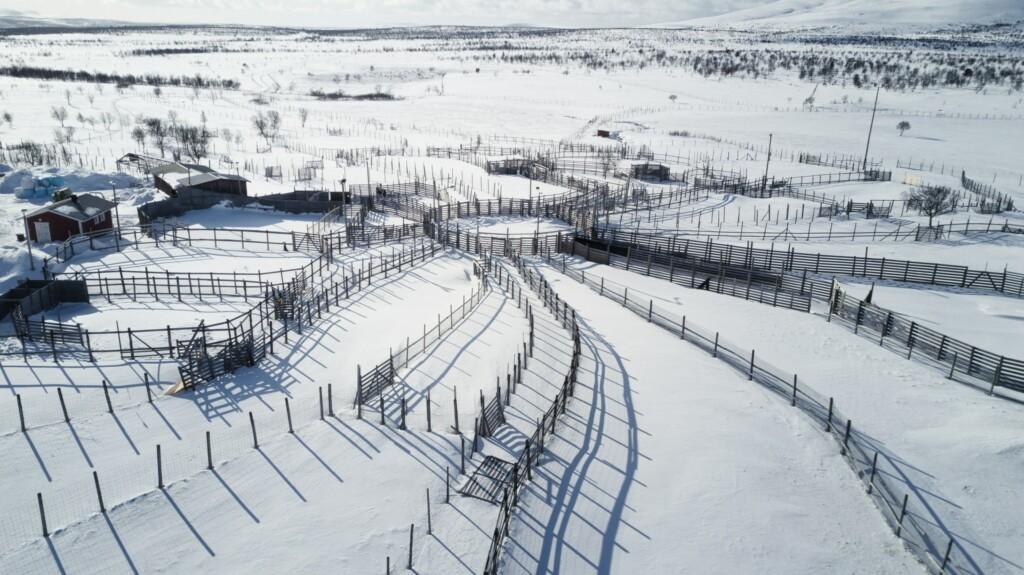
Assembling the Reindeer from the Wilderness
The reindeer roundup takes place usually in October. New calves are born in May, and for the whole summer, the reindeer have been moving freely within the co-operative´s area in the wilderness, finding food from the nature. The mating season of the reindeer is in September. During the mating season, the male reindeer assemble female reindeer into smaller groups (this group of reindeer is called eallu). The reindeer herders time the roundups right in the end of the mating season, to utilize these ready-made groups of reindeer. In Paistunturi, there are about 6.000-7.000 reindeer plus the new calves born in May. The herders assemble reindeer from the wilderness with snowmobiles, ATV´s, dogs and drones, steering the movement of the reindeer towards the roundup area. Herders move the reindeer in groups of about 1.000-2.000 reindeer at a time. This process of gathering the reindeer is called čohkket. This requires expertise and experience, as the herders lead this huge group of wild animals for tens of kilometres in the wilderness.
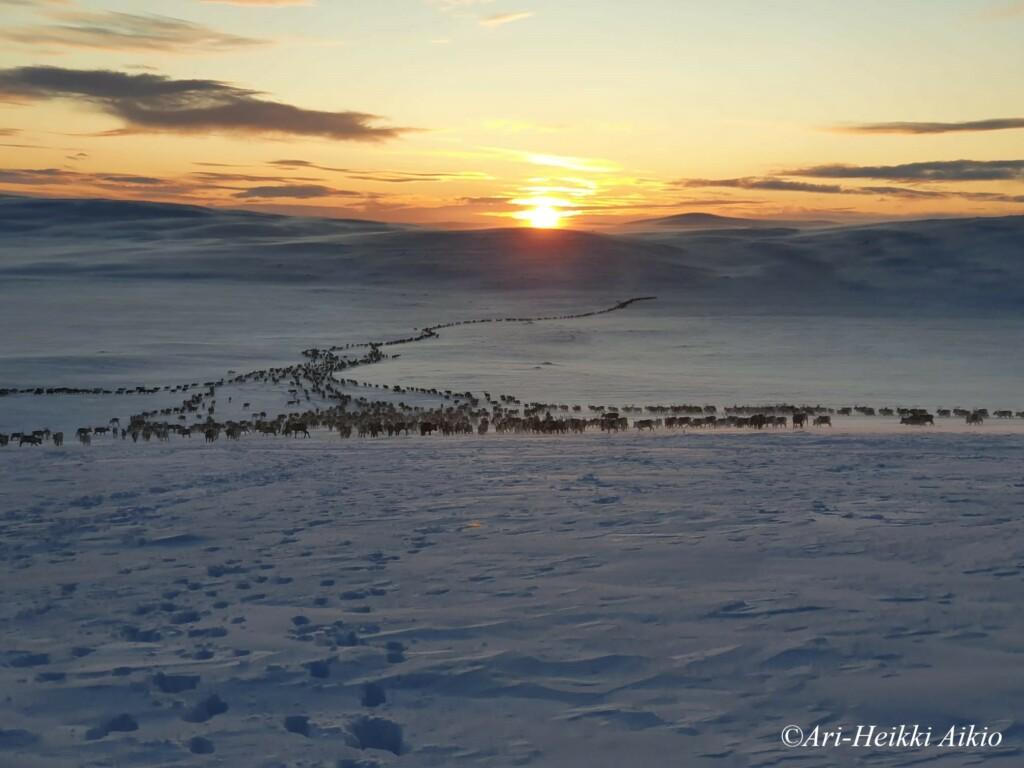
Reindeer in the Roundup Fence
When one group of 1.000-2.000 reindeer is assembled close to the roundup area, they are put in a large observing fence area through a wide aisle (geahčadallanáidi). From there, they are guided to smaller fences (ovdagirdnu) and then to the actual roundup fence (girdnu), the circle-shaped fenced area in the middle of the system, for the first round of separating the reindeer. The girdnu fits about 50 reindeer at a time, so there are several consecutive groups that are handled. 1,5-year-old female reindeer (vuonjal) and adult, male reindeer with big antlers, are all recognized from the earmark, registered and separated from the smaller calves and other adult reindeer, and given a medicine to prevent parasites, and they are let back loose to the fells. Also other adult reindeer are recognized from the earmark and all herders paint their initials and a number on the reindeer skin, with colourful spray paint developed for marking sheep. The calves born in May do not have an earmark yet, so during the first round, they only receive a collar with a number label. The smaller calves and other adult reindeer are then put back to the bigger observing fence (geahčadallanáidi), where all herders observe the movement of the reindeer. Calves usually follow their mothers, so this is how the herders recognize which calves belong to their group of reindeer. The herders write down the numbers of their reindeer and calves. This information of the owner of each calf is then put together by the reindeer herding chief (boazoisit).
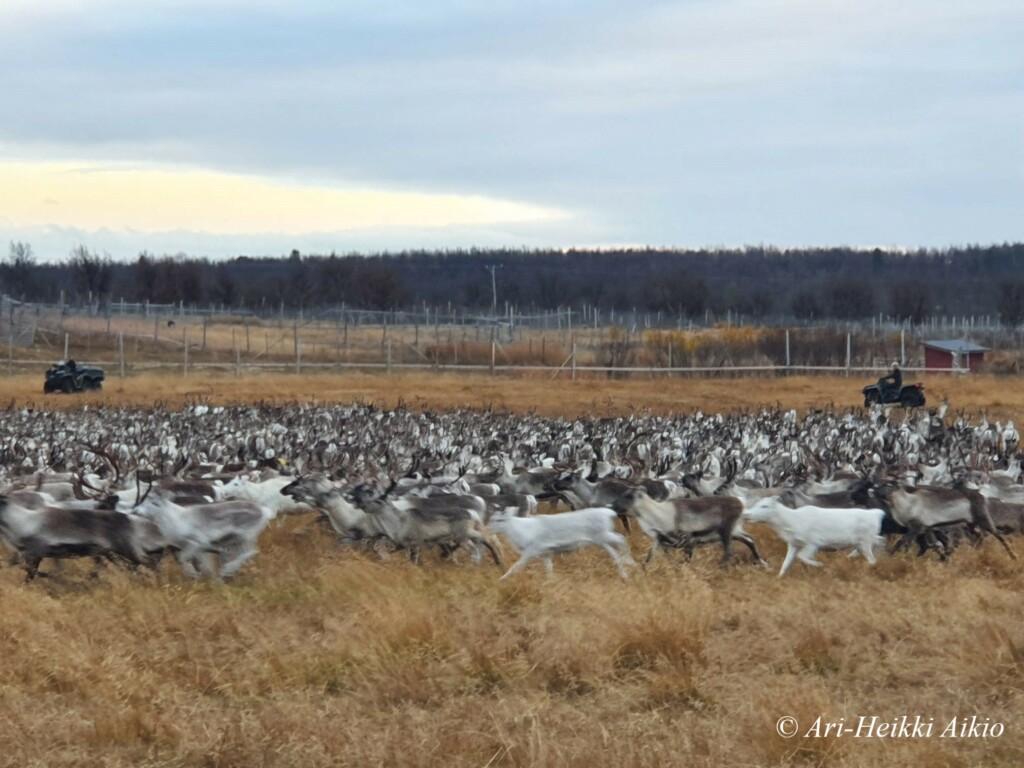
After this, starts the second round of the reindeer separation. Again, all the reindeer are moved from the large watching fence to the pre-roundup fences, and from there through the aisles in the fence-system back to the roundup fence girdnu in smaller groups. In this second round, all reindeer herders catch their own reindeer (with earmarks and painted initials) and calves (with number tags) and decide which reindeer they sell for meat industry*, which are for domestic use and which reindeer are let back to the wilderness to live in the eallu.
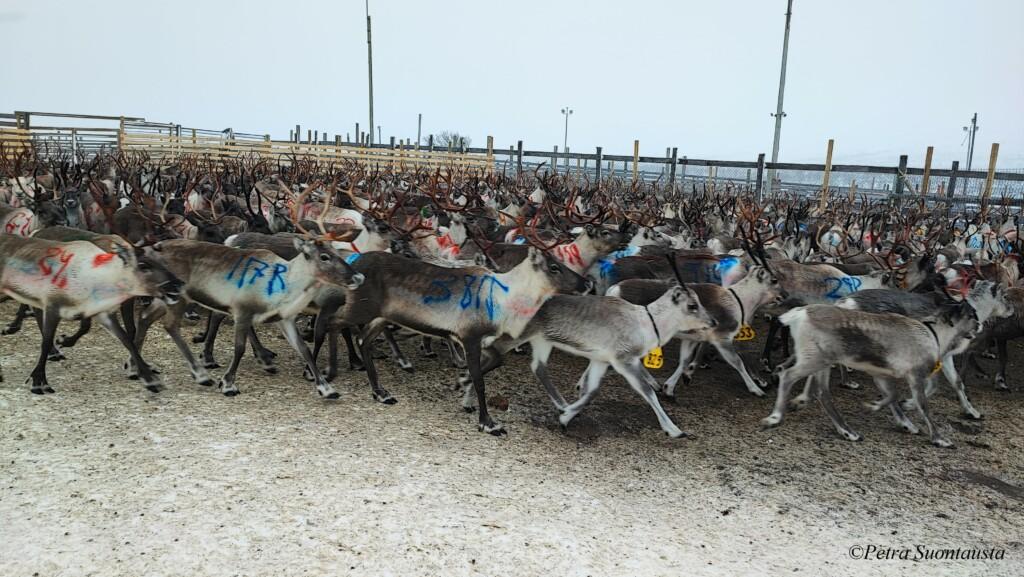
The reindeer are caught one by one by grabbing on the antlers and held and pulled tightly. Then the herders decide what to do with each of their own reindeer and then register the number. Then the reindeer is pulled to one of the smaller fences or isle for the purpose – to the Shop (gávpi) or to one of the offices (kontor). The Shop is a larger fenced area, with a gate straight from the girdnu, with a long alley leading to the abattoir yard, where the reindeer have fresh, running water from a river and hay to eat to relieve the stress of the animal. The smaller fenced areas right by the girdnu are herders own or shared “offices”. The herders put the reindeer that they will have for the use of the family to their own offices. There are several offices by the girdnu, as most herders have their own. Bigger, shared offices are used for the reindeer that are let back to the wilderness, as they are herded back to the nature in cooperation. All of the reindeer let back to the nature are given medicine to prevent parasites by a vet that is present for the whole process of reindeer roundup.
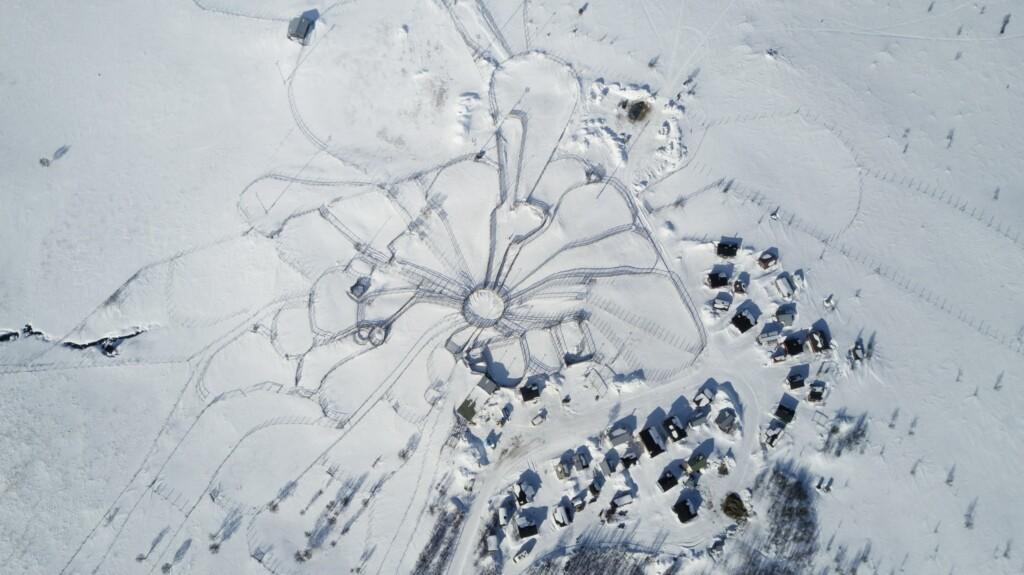
The second round lasts for at least a day. After separating the consecutive groups of reindeer, until all 1.000-2.000 reindeer are registered, there is still much work left for the herders. The reindeer that are set free back to the wilderness are guided several kilometres away from the fence area “entrance”, to make sure they don´t turn around and come back to the fences. The reindeer that were left for domestic use are first stunned and then the carotid arteries are cut and the carcass is skinned and eviscerated. After the carcass has been hanging to dry for about a day, the meat is cut and packed. Most of the reindeer parts are utilized. Traditional Sámi cuisine includes delicacies made of marrow of bones and reindeer blood. The antlers and skin of the reindeer can be used for traditional Sámi handicrafts and utility articles, such as jewellery, shoes and reindeer hides.

The reindeer that are sold to meat industry, are loaded to trucks via another fence system that is connected to the roundup fence via a long isle. Previously, most reindeer were put down at the co-operatives´ own, smaller abattoirs, but nowadays trucks take most reindeer to a bigger abattoir. The fence system by the truck yard is designed so that it allows the reindeer to unwind, but also the reindeer herders are able to handle the reindeer in smaller groups. The trucks that are used for transporting living animals, have smaller pens, so only a few reindeer at a time can be loaded in. A vet checks all the animals to make sure they are fit for the transportation.
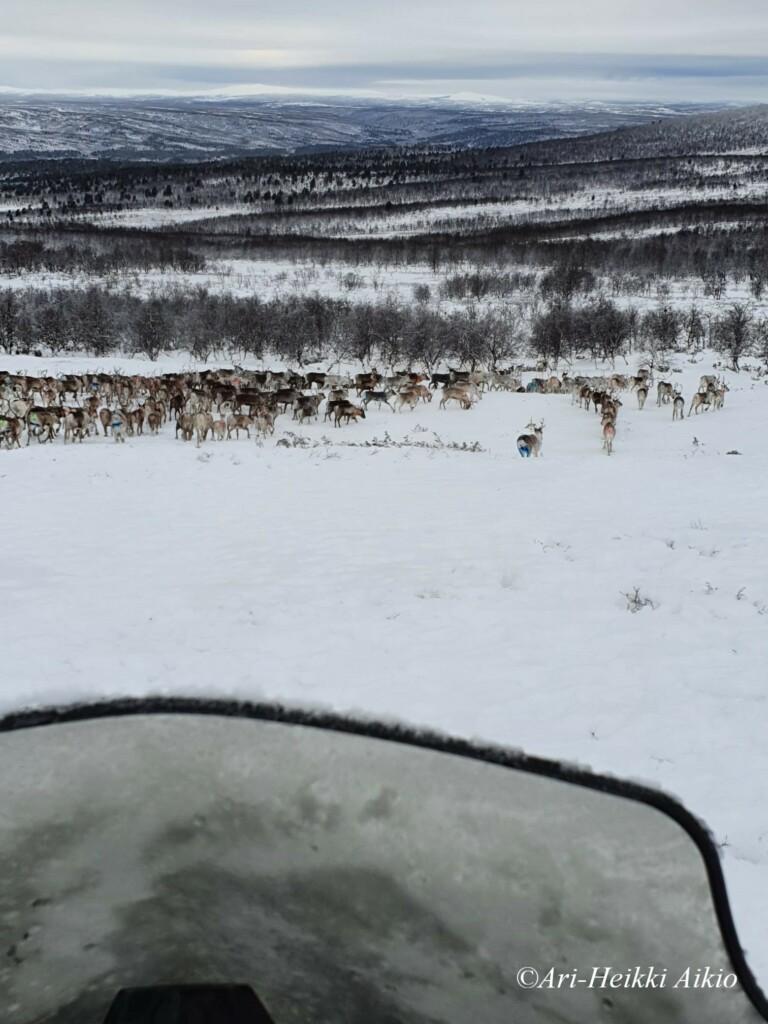
If the weather is good and the reindeer herders have not agreed to have a day off, some herders get ready to go out in the wilderness to gather the next group of a few thousand reindeer. Then the whole process starts over again, after all the reindeer in the co-operative have gone through the separations. The reindeer roundups last for about a month, as assembling one group plus separating them at the roundup fence takes all together 4-7 days.
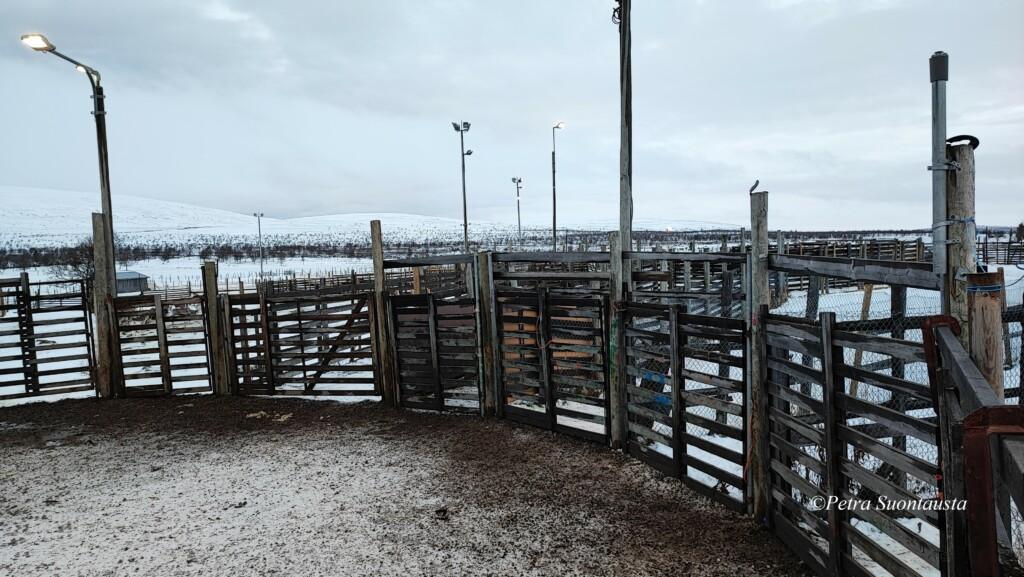
This article is written by Petra Suontausta, with the permission and consultation from the Chief of the Paistunturi Reindeer Herding Co-operative. The author lives in Utsjoki and studies tourism in Sámi Educational Institute in Inari. The author had the privilege to take part in the actual roundups for one week in October 2023.
Read more about sustainable travelling in Utsjoki region and how to respect the reindeer and local culture on Explore Utsjoki website.
*How many reindeer have to be killed for meat is regulated by the Finnish Ministry of Agriculture and Forestry. Every ten years, there is a new Act that regulates the maximum amount of reindeer allowed in each reindeer herding district and also the maximum amount of reindeer allowed for one reindeer herder. The maximum amount is set by the government to mediate the interests of different livelihoods in use of land and to protect the ecosystem. The maximum amount of reindeer per one herder is 500 for all districts.